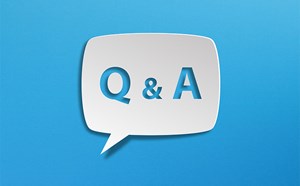
EM Wellness Program
Sometimes starting is the hardest part. No, it is DEFINITELY the hardest part. I experienced burnout in my PEM fellowship and vowed never to let myself get to that stage again. Fueled by passion that was both self-serving and beneficial to others, I started a wellness committee within my own emergency department and have networked with others in my hospital to follow suit.
In discussing how to start a wellness program in the department with my chair, we reviewed the many cases to be made for creating wellness programs, that include the moral cause because it's the right thing to do, the regulatory cause in that ACGME and AAMC require wellness efforts to be in place for trainees, and lastly the business case that promises a return on investing in wellness for staff. Mostly importantly, I conveyed my passion and dedication to finding ways to improve the work experience for my colleagues. After we had this meeting of the minds, he simply told me to create a new committee, schedule a meeting, and ask people to come. Naturally, the people who came to these meetings were like-minded and willing to talk about this topic freely, but I wanted to make sure our efforts reached the rest of our department. In partnering with my chair, we agreed that he would attend all the wellness committee meetings, and would give me time during staff meetings to give updates. This would set the tone for the department that this topic was valued and prioritized by our leader.
Aside from setting up the structure for a wellness program, and the strategy for communication/advertising, the interventions need to be equally thoughtful and tailored to a specific department. It is very common for programs to have only social events as being equal to their well-being efforts. And while there is benefit in promoting bonding amongst colleagues, we all know ice cream socials and pizza parties can only take us so far in being our best self and thriving in a challenging work environment. That is exactly what the chapter “Ice Cream Socials to Improve Wellbeing? Innovative Wellness Initiatives that Really Make a Difference” in the newly published From Self to System Being Well in Emergency Medicine e-guide explains.
For my own department, we have a program that addresses workflow and operations issues that frustrate providers, in the spirit of improving efficiency of practice. In addition to many social events (our group really likes to get together :), we have guest speakers during grand rounds come to speak about personal resilience and evidence-based well-being interventions, and recently renovated our break room to provide a nicer experience while taking a quick lunch break during a shift.
I’ve created a short, easy-to-follow worksheet to help other’s start a wellness program in their own departments. It is based on the principal drivers of burnout/professional fulfillment from Stanford University, but any model could work. I want you to work smarter, not harder. I want your efforts to really mean something to others, because your time and energy is valuable. Make sure the well-being interventions are well-rounded in your department, and not just social events. Make sure your efforts are aligned with local leadership to ensure their importance is being conveyed to the rest of your colleagues. Last, but not least, make sure others know about what you are doing. Start a group chat on what’s app, or any other communication modality, and keep people informed. Ask for time during staff meetings to give brief updates and ask for feedback from the group.
What’s an innovation promoting well-being that’s really working in your department?
Thank you for everything you do to push the needle and make the work experience for yourselves and others better.
Building a Wellness Program Worksheet
Building a Wellness Program Worksheet - Example
Sincerely,
Diana Savitzky MD
ACEP Wellness Section Chair-Elect



